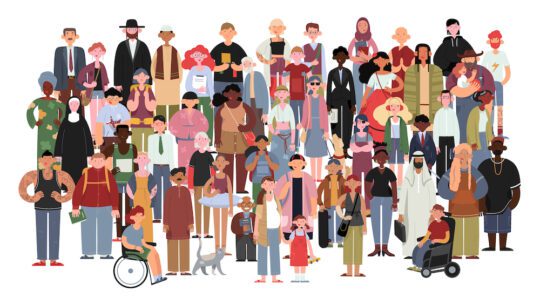
In some instances, onlookers may say the movement toward diversity, equity and inclusion is moving in the wrong direction.
Texas and Florida are trying to pass bills to defund DEI programs in higher education. Ohio and Oklahoma are looking to follow. The NAACP just issued an advisory for Florida travel, as did Equality Florida and the League of United Latin American Citizens. Corporate diversity pledges seem to be trailing off as many organizations include DEI specialists in layoffs.
On May 25 it will have been three years since the cultural awakening after the death of George Floyd. Annual articles on each industry’s evolution toward DEI goals and where they fall short will appear, but it’s not those news pieces that will spark change. It’s not the simple mention of initiatives or how much budget is allotted toward them or subtracted in a shaky economy.
One of the tasks for all communicators, no matter what the subject or product, is to build community. And regardless of leadership, the power of inclusion lies within safety in numbers—in the employee body. PR pros can make a difference by stepping up and working together with human resources and senior leadership to identify the community’s DEI needs and deliver the roadmap for organizations to follow.
DEI as a Community Issue
It’s important to acknowledge that DEI is not just a program coming from HR to react to cultural zeitgeists, but a change to unite the company to help create a more welcoming and inclusive environment.
“It’s important to recognize that while internal communications strategies are sometimes primarily relied upon for crisis situations…organizations should regularly leverage their internal comms teams to tackle issues of inclusivity and diversity, [as] effectively communicating the issues with their own employees is a pivotal step in achieving a broader understanding of why these changes are so necessary,” says Hollin Nies, communications strategist, Vansary.
And it doesn’t matter where a company is based. According to the latest Edelman Trust Barometer, “six in ten employees (across the country) say they won't work for organizations that fail to speak out against racial injustice. 62% of those surveyed say companies are "doing mediocre or worse" in living up to their promises to address racism at work and in their communities.”
Natasha O’Dell Archer, Global Executive Vice President, DE&I, Golin, says diversity goes beyond race—it’s about celebrating what makes each person an individual.
“Remind the employee population that every person in the organization is diverse in some way – diversity means similarities and differences that make us unique,” she says. “The more we realize we all have more in common than we think, the more open we can be in supporting one another’s differences and advocating for an inclusive ecosystem.”
Acknowledging the Ostracized
It’s no secret that acknowledging DEI issues can be uncomfortable. However, if employees are not living with clear DEI standards and learning how to accept different cultures, change cannot emerge or sustain itself.
Liang Zhao, CEO and founder, Vansary, says it’s important for companies to first look within to help the entire company see where to start.
“Internal policies and practices should be aligned with a culture of inclusion,” Zhao says. “Evaluating existing policies, procedures and practices is the first and most important step in identifying a company’s unintentional bias. Recruitment, hiring practices, promotions, performance evaluations, and team dynamics should be designed with a culture of inclusion in mind.”
Again, while some employees may bristle at formal training and evaluations, it’s important to keep the sense of community in mind. A recent New York Times article showed how some organizations are changing the words “diversity and inclusion” to “diversity and belonging.”
Stephanie Creary, assistant professor of management at the Wharton School of Business, told The Times, “Belonging is a way to help people who aren’t marginalized feel like they’re part of the conversation.”
Learning the Language
It’s not just about introducing diversity, but about challenging perceptions. Not everyone may feel welcome in an organization, even indirectly, so it’s important to create a safe environment.
Another way everyone can participate is through the adaptation of inclusive language. Even the best communicators and writers can be caught off guard when called out for an offensive cliché that may be past its time for use.
“If you hope to encourage inclusive language into your communications practices, the work starts in your own backyard,” Nies says.
“With respect to HR and internal communications teams, establishing and reinforcing the use of inclusive language across all company functions (i.e., company values, job postings, messaging guidelines, sales decks) is integral to the development of a more equitable and inclusive industry as a whole.”
Platforms like HoneHQ can help organizations with lessons on behavior change, human connection and continuous growth. And tech stack plug-ins like Fairwords, a tool that operates a lot like Grammarly, but on an inclusive-language level, can help inform employees on how to embrace inclusion, just through the language they use at work and beyond the office.
“Only with sincere employee participation and understanding can companies see real and lasting change when it comes to building a culture of belonging,” Nies says.
Nicole Schuman is senior editor for PRNEWS. Follow her @buffalogal
